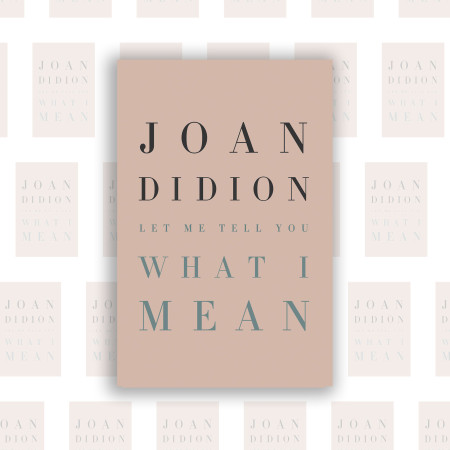Joan Didion's New Book Let Me Tell You What I Mean Shows Off Her Early Work
The collection spans decades and features never-before-seen pieces.

To encounter Joan Didion for the first time, as I did while a senior in high school in the spring of 1983, is akin to knocking back a double espresso: a pulse at the temples, a rush of clarity, a tang of bittersweetness.
Through her work, Didion has conjured a culture that's dazzling and dangerous, mythic and mundane. Her legacy begins with her early essays on California, gathered in her canonical Slouching Toward Bethlehem and The White Album, and continues to include her National Book Award-winning memoir, The Year of Magical Thinking, which recounts her grief-daze following the death of her husband and creative partner, John Gregory Dunne.
In each of her novels and works of nonfiction, she's calibrated sentences like a scientist in a laboratory, sifting syntax, centrifugating cadences. Nothing goes unused. As she observes of her mentor Ernest Hemingway: "You care about the punctuation or you don't, and Hemingway did. You care about the 'ands' and the 'buts' or you don't, and Hemingway did." The same is true of Didion. Hers is the poetry of the flat Western vowels, the deadpan of Hollywood noir. Hers is the stray detail that speaks volumes, the firm conviction in seeing the thing for what it is—the urge to tell the story unadorned, just so.
 Now, the new release Let Me Tell You What I Mean, out now, brings together previously uncollected pieces in a prismatic retrospective; the critic Hilton Als charts the arc of her career in a rich foreword that's almost as long as the book itself. The essays could easily feel like bits from the cutting-room floor, but as usual, Didion exceeds our expectations.
Now, the new release Let Me Tell You What I Mean, out now, brings together previously uncollected pieces in a prismatic retrospective; the critic Hilton Als charts the arc of her career in a rich foreword that's almost as long as the book itself. The essays could easily feel like bits from the cutting-room floor, but as usual, Didion exceeds our expectations.
View the full story on OprahMag.com: Joan Didion's New Book Let Me Tell You What I Mean Shows Off Her Early Work.



